Roya Sachs and Mafalda Millies Just Launched a New Art Project With 150 Still Lifes Made by Artists In Quarantine


Sophie Neuendorf

Now is certainly a unique time in history and not one that might now immediately jump to mind as the time for kicking off a new art venture. But that just what friends and business partners Roya Sachs, Mafalda Millies, and Lizzie Edelman have been working towards lately. The trio launched their new business Triadic with an incredible art project bringing together over 150 artists, creatives, and innovators to visualize our new reality. Many of these artists shared their experiences and vulnerabilities, feelings of hope, pain, and introspection with extraordinary candor. Working from home, Artnet News virtually caught up with them to discuss the online art world, our new reality, and what we can learn from this period of isolation.
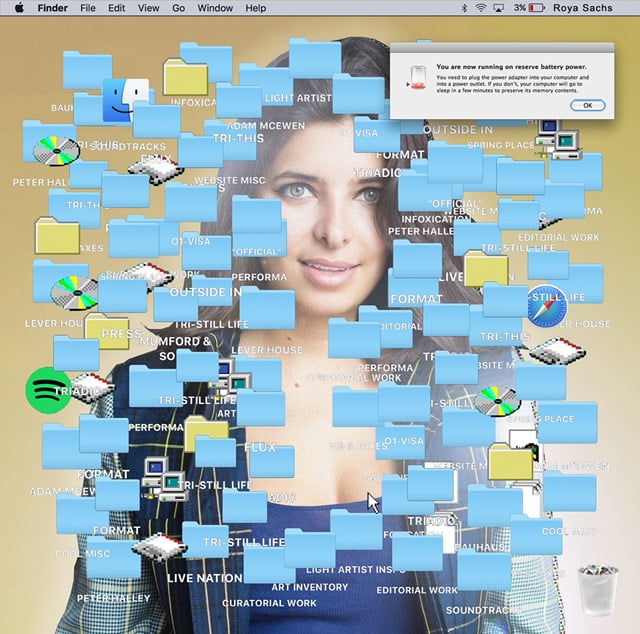
Roya Sach’s Desktop portrait.
You founded Triadic at the cusp of the current global pandemic. What do you feel has been the silver lining of starting a business during this unusual time?
Roya Sachs: The state of the world is changing daily. We wanted to react to this uncertainty by creating something that not only mirrors but also reacts to this in real-time, an on-going and continuously evolving visual journal. We reached out to over 150 creatives and innovators over the past eight weeks, and will actively continue to do so over the coming months, as the world adapts to new realities.
Mafalda Millies: On our side, we are using this time to re-define the experience of culture via technology. In doing so, we hope to find new ways to bring communities and artistic forms of expression together and eventually, be able to reintroduce them back into the analogue world. In early March, we launched “Tri-Still Life”, an online art series of still lifes by artists, creatives, thinkers, and innovators, reflecting on the current global crisis and subsequent confinement.
Lizzie Edelman: It is inspiring to see how quickly everyone has adapted and shifted to the digital realm. A challenge to all, but also an opportunity to change the way in which we work, and how we communicate with various audiences.’
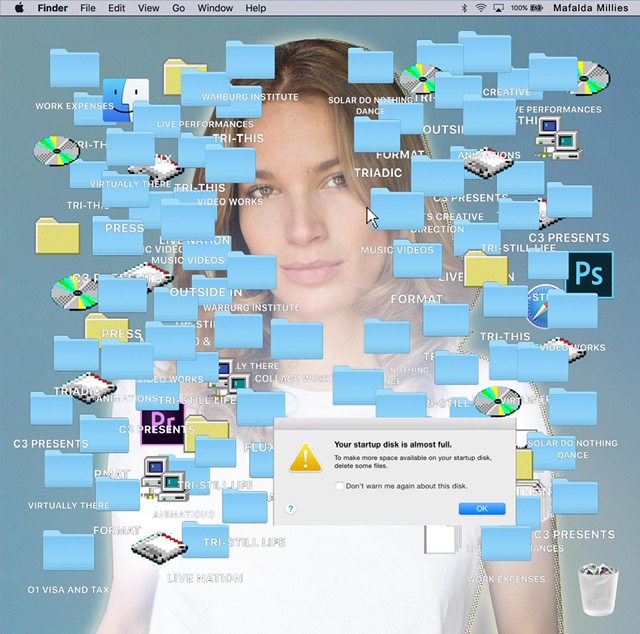
Mafalda Millies’s Desktop portrait.
“Art can offer a grand and serious vantage point from which to survey the travails of our condition,” Alain de Botton astutely observed. How do you think artists, creatives, thinkers have responded to this crisis?
RS: Alain de Botton’s quote from ‘Art as Therapy’ very much sits at the core of our project thesis — how this crisis affects us as individuals and as a community, as well as whether or how it is making us re-evaluate our human condition. Art is in many ways a coping mechanism, it helps us rationalize and trivialize our circumstances, teach us how to relate, to suffer, and to revive.
MM: So far, we have experienced an unexpected willingness by artists to share experiences and vulnerabilities, to discuss feelings of hope, pain, and introspection. Despite being physically disconnected, there seems to be a strong sense of camaraderie, and a desire to connect and collaborate, as a global community.
You’re working on an ongoing project with artists worldwide to document the impact COVID-19 is having on humanity. How has this project evolved, visually, over the past eight weeks?
RS: Our submissions have been diverse in location and incredibly varying in content. Whilst some have been political and existential, others have been more concerned with personal fears and desires. The earlier submissions were certainly overshadowed by the anxiety of the unknown, and have now drifted towards a more wholesome acceptance, surrendering control and finding peace of mind.
We hope to push this series beyond this period of quarantine, and continue to tell a relevant story during this unprecedented era of our lives. It was important for us to keep the theme as open as possible and accessible to every kind of participant — regardless of artistic expression, demographic, or location.
MM: We made the call for still lifes because of its simplicity, broadness, and classical representational value. Still lifes can be personal — composed of mundane or treasured objects that move, inspire, fulfill, or entertain in this isolated state. The still life can represent the past or present, be a portal to a kind of personal presence or preservation, ephemeral or long-lasting, and signify the natural or conceptual, random or controlled, irrational or rational order.
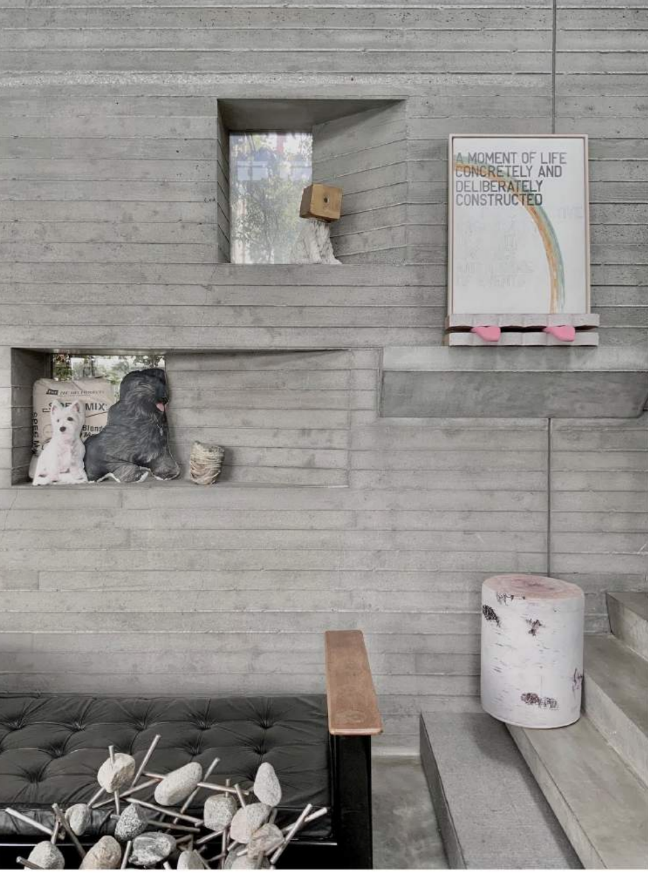
Kulapat Yantrasast, April 12, 2020, Los Angeles, USA.
What have been the most recurrent themes in images that artists have sent to you during this time?
MM: Alongside the still lifes, we asked our participants to share some thoughts accompanying their submission. Many artists have mentioned the passing of time, routine, home, family, the body, space, and nature. We also received a lot of still lifes containing flowers, oftentimes in decay, which is evidently a direct reflection of this time. This was the case with performance artist Boychild’s submission of a dying bouquet: “[An] image of the flowers I bought at the beginning of our self-imposed quarantine. They are no longer here, but this stage of a bouquet is my favorite. As the flowers descend from the apex of bloom, they become to me, more beautiful. In this time I have thought a lot about death, many of us are having to face it as never before. To me, this is an opportunity to reflect on life and its value. Systems of power, governments, societies are revealing the weak spots of care for the people within.”
RS: The redefinition of routine has also been commonplace in many submissions with artists using repetitive daily activities as a source of inspiration. The “Groundhog Day” experience that many are feeling, is in some cases accompanied by a ‘Fischli & Weiss moment’ of finding beauty and poetry in the seemingly banal. A great example of this is the submission by Brazilian sculptor Juliana Cerqueria Leite, who sent an image of the corner of her wall in her home in Sao Paulo, and noted, “Lately I find myself staring at this corner of the ceiling very often while I sit on the sofa. It’s a piece of excess, and because of the angle in which I see it the whole thing looks virtual like an extruded piece of unreal.”
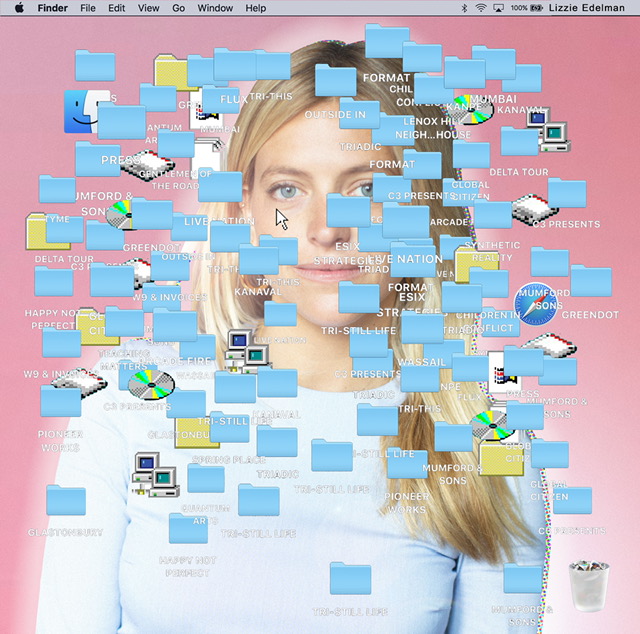
Lizzie Edelman’s Desktop portrait
Have you observed that the artist’s responses vary depending on where they are quarantined?
RS: In most cases, the response has been incredibly direct and personal, regardless of geographical location. We have found that the stillness that has accompanied our current state and the shock of uncertainty has evoked a new sense of appreciation, calmness, and awareness. Most submissions include such strong emotional juxtapositions, including hope and fear, gain and loss, happiness and sadness.
There is a universal sense of vulnerability and openness, which brings out a sense of community, whilst also shedding light on some existential new realities we are facing as a society. This can be seen in the image of artist and filmmaker Shirin Neshat’s decaying apple, who notes, “ We tried to change the world and now the world is changing us….Everything about us….including how we work as artists!!”. Food for thought, quite literally!
MM: This comes hand in hand with the theme of longing, which we have also found commonplace. Anonymous Spanish artist collective Luzinterruptos’s image of a glowing breast-like water sculpture, reads with it, “ The word we’d like to add to the image is ‘touch,’ as this is what we are truly missing during this confinement is the physical touch, the human heat of our beloved ones.” The isolated state that our community finds itself in, appears to bring out an innate sense of nostalgia. Artist collective TROIKA’s late-night office still life also pertains to this, “… The loneliness of the shot. The overt presence of all these electronic objects and communication tools which have become our reality; late at night, after all your zoom friends have left the chat and you find yourself pondering on what will happen next, what is important, while longing to belong to someplace, some people, some time, trying to cling on to some feeling of normalcy…”
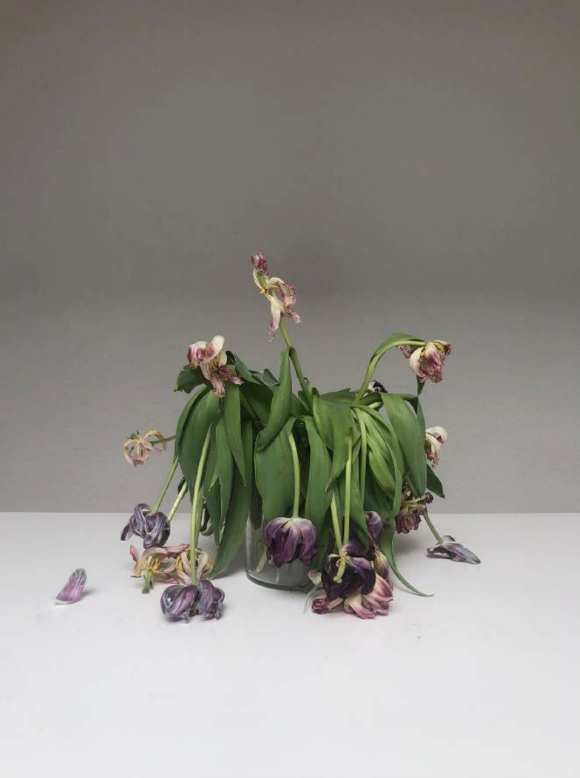
Boychild, March 31, 2020, New York City, USA
Let’s be positive and imagine that the pandemic will be over this autumn. What will be the lasting impact on the art world?
RS: Art is becoming, and should continue to become, more readily available to the masses regardless of location, financial standing, or demographics. As cultural doors have been physically shut — galleries, museums, and institutions, have had to find new ways to engage and connect with their audiences, and share their content. This has propelled expansive global access to culture via the Internet.
MM: As an example, video art — a famously inaccessible medium to the masses— is now frequently surfacing the digital world. Some of our highlights of this period include the Julia Stoschek Collection releasing daily new media works from her expansive repertoire, SFMoMA strevulaming iconic video works from their collection every week, and Sean Kelly’s newly launched #FilmFridays series.
LE: Another powerful moment was The Met Opera’s recent ‘At-Home Gala’, which brought together over forty of the world’s leading opera performers through live-streams (from Tbilisi to New York), alongside the entire Met Orchestra and Chorus. It was free and anyone in the world could tune in to watch. Let’s hope these new programs of sharing art with the public will live beyond the global crisis, and open new doors for how and when we can digest arts & culture.
If you could be quarantined with any 3 artists, living or dead, who would each of you choose?
MM: Salvador Dalí: themed parties in parallel universes, opulent dinner buffets, and taking the pet anteater for walks around the egg-shaped block.
LE: Judy Chicago: heated debates on influential women in history, hand painting china classes on the weekends, and who knows, I may also come out of quarantine with purple hair!
RS: Joseph Beuys: because everyone needs a mad professor and charades master in the house!
You’re friends as well as partners, and a great example as strong, independent women. What is your advice to women trying to make their way in the art business?
RS: The only three things I can impart from my (limited) experience: always ask questions, there’s (almost) no such thing as a stupid question; trial and error, it’s the most fun time to experiment; and finally, a mantra that my mentor RoseLee Goldberg shared with me about working on any project, “100% risk, 100% trust.”
MM: Don’t sweat the small stuff! Surround yourself with people you trust and admire. Stay open-minded and don’t be afraid to fail. Know what you’re capable of and where your limits are. Accept help and give back, but don’t rely on anyone. Trust your judgment but don’t judge too fast. Take pride in what you do but don’t take yourself too seriously.
LE: Be confident and unwavering. Always seek guidance and advice, as you may find it in the most unlikely of places. This is not an easy industry to work in, and as young women with a new voice — remember to stand your ground and trust your gut.
See more of the project on Triadic’s Instagram.